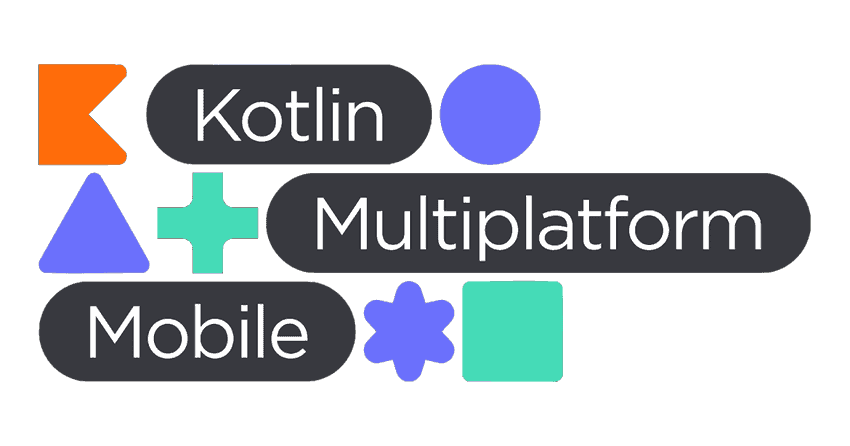

Kotlin Multiplatform Mobile (KMM) : A Game Changer in Cross-Platform Solutions
In recent years, mobile app development has undergone significant changes, with developers constantly seeking efficient ways to build apps for both Android and iOS platforms. Kotlin Multiplatform Mobile (KMM) has emerged as one of the most promising solutions, providing a seamless way to share code between platforms while still offering native performance.
This article will explore the essence of KMM, its advantages, disadvantages, and why it’s gaining traction in the app development community.
What is Kotlin Multiplatform Mobile (KMM)?
Kotlin Multiplatform Mobile (KMM) is an SDK from JetBrains designed to simplify the process of developing cross-platform applications. It allows developers to write shared code for the business logic, data layer, and other platform-agnostic modules, while retaining the ability to write platform-specific code for user interface (UI) and platform APIs like Bluetooth, GPS, etc.
The key principle behind KMM is code sharing where it makes sense, and full native functionality where it's necessary.
Key Features of KMM:
- Shared Code: Developers can share the business logic across Android and iOS platforms, reducing duplication of work.
- Full Access to Native APIs: Even though the business logic is shared, KMM allows direct access to platform-specific APIs for Android (using Kotlin) and iOS (using Swift or Kotlin/Native).
- Full Compatibility with Existing Codebases: KMM doesn’t require a complete overhaul of your existing Android or iOS app. Instead, it allows gradual adoption, meaning you can share only the parts of the codebase where you see fit.
- Multiplatform Libraries: Libraries like Ktor for networking, SQLDelight for database management, kotlinx.coroutines for asynchronous programming and kotlinx.serialization for JSON handling simplify development by offering cross-platform support.
Advantages of Kotlin Multiplatform Mobile
- Single Codebase for Business Logic:
- One of the biggest strengths of KMM is the ability to write a single codebase for the business logic that can run on both Android and iOS. This reduces the need for writing the same code twice and leads to faster development cycles.
- Native Performance:
- KMM doesn't compromise performance. Since the UI remains platform-specific, the app can retain native look and feel. Business logic, once written in Kotlin, is compiled to native code, ensuring efficient execution on both platforms.
- Flexible Integration:
- You don’t need to start from scratch with KMM. It allows gradual migration of your existing codebase, so you can begin by sharing only the logic between Android and iOS while maintaining platform-specific UI components.
- Better for Teams with Existing Kotlin Expertise:
- If your team is already well-versed in Kotlin (which is widely used for Android development), adapting to KMM is relatively easy. It leverages Kotlin’s strengths, meaning your team doesn’t need to learn entirely new languages or frameworks.
- Reduced Maintenance:
- Since much of the codebase is shared, it’s easier to maintain. When changes are made to the shared code, they apply to both platforms, which reduces the workload and ensures consistency across your Android and iOS apps.
- Open Ecosystem:
- KMM has an open ecosystem, which allows developers to integrate their favourite libraries, tools, and APIs into the shared code. The Kotlin community is also growing rapidly, offering a variety of tools and resources.
Disadvantages of Kotlin Multiplatform Mobile
- Incomplete Maturity:
- While KMM is a very promising technology, it is still evolving. Some features are still experimental, and there may be bugs or missing functionalities that developers have to work around. The ecosystem, while growing, is not as mature as Flutter or React Native.
- Requires Knowledge of Native Development:
- KMM excels in sharing business logic but leaves the UI and platform-specific integrations to native development (Android or iOS). Therefore, developers need to have knowledge of both Android and iOS development to build the platform-specific parts, such as UI, which might be a challenge for those unfamiliar with both platforms.
- Limited Cross-Platform Libraries:
- Not all libraries support multiplatform usage. While KMM is improving in this area, some third-party libraries might not work in the shared code, which could force developers to write platform-specific implementations.
- Smaller Talent Pool:
- Since KMM is a newer technology, finding developers who are experienced in both Kotlin and iOS/Swift might be more challenging. Companies might need to invest in training, which can be time-consuming and expensive.
- Performance Overhead:
- While KMM ensures native performance in most cases, there can be minor overheads when bridging between the shared and native code, particularly when calling platform-specific APIs. This may not be a concern for many apps but could be an issue for performance-critical applications.
When to Choose Kotlin Multiplatform Mobile?
KMM is a great choice when:
- You are already invested in Kotlin (for example, if your Android app is written in Kotlin).
- You want to share non-UI code such as business logic, networking, and data storage across Android and iOS apps.
- You have a team that is familiar with both Android and iOS development, as KMM still requires native development for platform-specific features.
- You want the flexibility to write platform-specific code where necessary, ensuring that your app performs optimally on each platform.
Conclusion
Kotlin Multiplatform Mobile is an innovative and promising approach to cross-platform mobile development. It enables developers to share core logic across platforms while preserving native performance and user experience. While it is not as mature as some other cross-platform frameworks like Flutter or React Native, its potential to integrate seamlessly into existing projects and leverage Kotlin’s powerful language features makes it an exciting option.
For developers or teams already working with Kotlin and looking to reduce duplication of work without compromising on native performance, KMM is worth exploring. However, the decision to use it should consider the need for native development knowledge and the current state of KMM’s tooling.
By weighing the advantages and disadvantages, KMM can be a powerful tool in the right circumstances, offering a more balanced approach to cross-platform app development.

